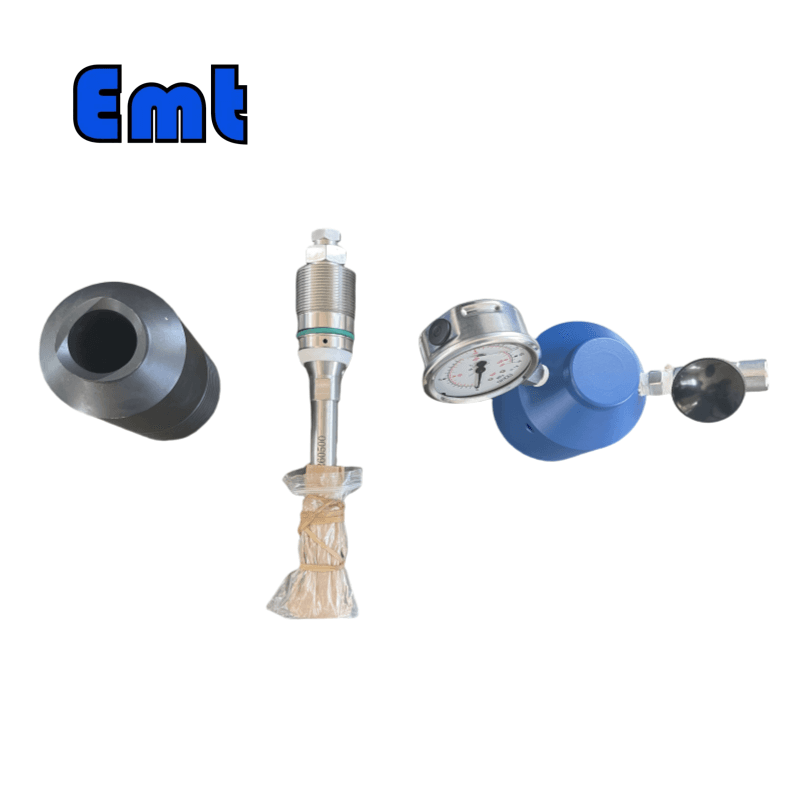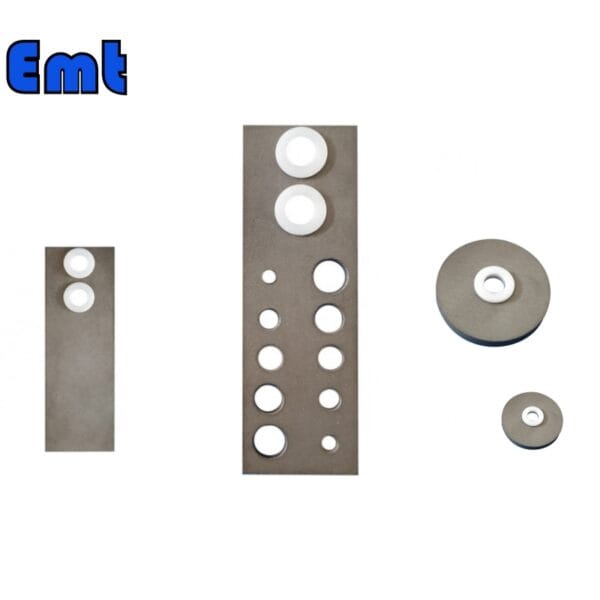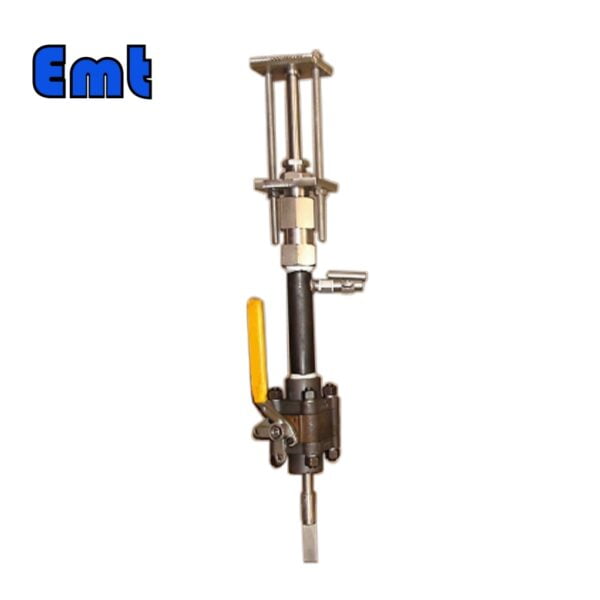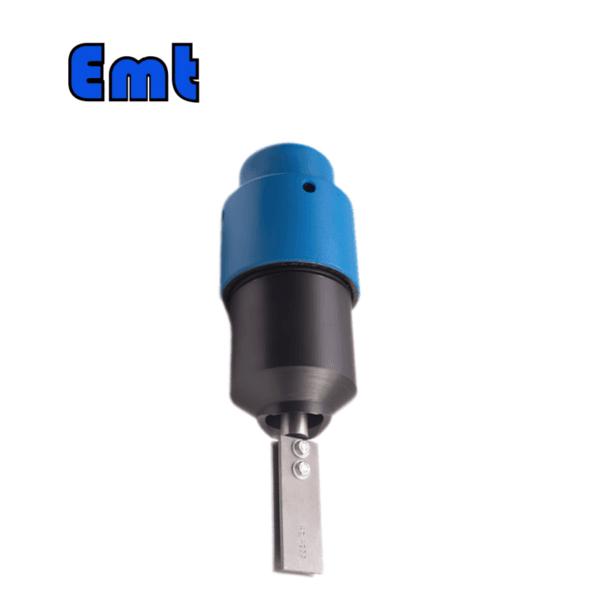EMT corrosion coupon is specialized tools used to monitor the rate of corrosion within various industrial systems
Name | Corrosion Coupon EMT-CI | |
| Material | Stainless Steel 304、Stainless Steel 316、DSS F51、Carbon Steel A105N、Inconel 625 | |
| Operating Temperature | -20-+120 | |
| Feature | Firstly, easy to operating | |
| Secondly, high Accuracy Long Life | ||
| At last, high Efficiency, Low cost | ||
| Payment | TT/LC | |
| Advantage | Firstly, they are light weight and flexible. | |
| Secondly, nice Injection efficiency. | ||
| At last, accurate corrosion testing. |
Order Information
Corrosion Coupon EMT-CI
| Model | ||||||
| EMT-CIPA | Access Fitting Body of Corrosion Coupon, Injector, Probe assembly | |||||
| – The material of Access Fitting Body | ||||||
| 0 | CS | |||||
| 1 | 316SS | |||||
| 2 | 316LSS | |||||
| 3 | DUPLEX SS | |||||
| The Type of Access Fitting Body | ||||||
| B | 2″Welded(suffix “pressure rating” can be added to B) | |||||
| F | 2″ANSI Flange(suffix “pressure rating & sealing type” can be added to F) | |||||
| -Tee Size- pressure rating & sealing type if flanged end | ||||||
| 0 | No Tee | |||||
| 1 | 1/4″NPT(F)Tee | |||||
| 2 | 1/2″NPT(F)Tee | |||||
| 3 | 3/4″NPT(F)Tee | |||||
| 4 | 1″NPT(F)Tee | |||||
| 5 | Hole for 1/4″SWN Flange | |||||
| 6 | Hole for 1/2″SWN Flange | |||||
| 7 | Hole for 3/4″SWN Flange | |||||
| 8 | Hole for 1″SWN Flange | |||||
| -Protective Cover Type/ Material | ||||||
| 0 | No Protective Cover | Material | ||||
| 1 | Without hole | CS or 0 | ||||
| 2 | With hole | SS or 1 | ||||
| 3 | Bleed Valve | DSS or 3 | ||||
| 4 | Bleed Valve, & Pressure Gauge | |||||
| For Example:EMT-CIPA-0F600#RF-2-1/CS shows 2″ANSI 600#RF Flange Access Fitting Body in CS, 1/2″NPT(F)Tee, Protective Cover in CS without hole 0F600#RF: 0F_ Access Fitting Body is Flanged in CS , 600#RF _Size is 2″ANSI 600#RF , 2:Tee size is 1/2NPT(F) 1: Protective cover type is without hole /CS: Protective cove material in CS | ||||||
Corrosion Coupon EMT-CI

| Model | |||||||||||||
| CC | Corrosion Coupons | ||||||||||||
| -Code | Plug Body Assembly | ||||||||||||
| Pxxx | Type | Material | Sealing Material | ||||||||||
| 0 | No Request | 0 | CS | 0 | No Request | ||||||||
| 1 | Hollow Plug Body | 1 | 316SS | 1 | Viton O-Ring / PTFE Primary Packing | ||||||||
| 2 | Solid Plug Body | 2 | 316LSS | 2 | HNBR | ||||||||
| 3 | DUPLEX SS | ||||||||||||
| 4 | INCONEL | ||||||||||||
| Type of Coupon Holder | |||||||||||||
| SR | Fixed Coupon Holder for assembling rectangular coupon | ||||||||||||
| AR | Adjustable Coupon Holder for assembling rectangular coupon | ||||||||||||
| LR | Ladder Coupon Holder for assembling rectangular coupon | ||||||||||||
| SC | Fixed Coupon Holder for assembling circular coupon | ||||||||||||
| AC | Adjustable Coupon Holder for assembling circular coupon | ||||||||||||
| -Pipe Size | |||||||||||||
| x | Pipe Size in inch | ||||||||||||
| – Coupon Size | |||||||||||||
| A×B×C | Coupon Size in inch or mm | ||||||||||||
| – Coupon Material | |||||||||||||
| x | Grade | ||||||||||||
| -Finishing of Coupon | |||||||||||||
| 0 | Mill | ||||||||||||
| 1 | Glass Bead | ||||||||||||
| – Isolation Gasket | |||||||||||||
| 0 | No Gasket | ||||||||||||
| 1 | Nylon Gasket | ||||||||||||
| 2 | FTFE Gasket | ||||||||||||
| For Example:CC-P221-SR-6″-3″×1/2″×1/8″-MS1018-0-2 CC: Corrosion Coupon P221: Solid Plug Body in 316LSS Viton O-Ring and PTFE Primary Packing SR-6″:Fixed Coupon Holder for assembling rectangular coupon and for 6″pipe 3″×1/2″×1/8″: Coupon Size MS1018: Coupon Material 0: Finishing of Coupon is Mill 2: Material of Isolation Gasket is PTFE | |||||||||||||
Example for a set of Corrosion Coupon EMT-CI:
EMT-CIPA-0F600#RF-0-1+ CC-P221-SR-6″-3″×1/2″×1/8″-MS1018-0-2
Common pipeline corrosion types
Pipeline damage
Pipeline damage is usually the first indication of corrosion problems. However, in many cases. Such signs of pipeline damage will obviously exist for months or years. It’s just that people have been ignoring it.
This damage may be minor (in the form of pinhole leakage). It can also be catastrophic. Because whether the water quality is damaged or the pipeline is replaced, it will bring significant economic losses.
Pipeline maintenance
There are various forms of pipeline maintenance. It includes the use of temporary fixtures, to replace the entire piping system. In many cases, failure to face up to corrosion problems can lead to serious results. This is to face multiple failures or continuous maintenance. And it will waste a lot of valuable time. Therefore, we should face the problem correctly from the beginning. This will minimize corrosion damage.
The single failure or multiple failure of a part is often due to the failure to thoroughly identify the hidden causes. Because absolute trust will make us relaxed. But this is also a dereliction of duty. Corrosion rate data provided by corrosion coupon. They are often diametrically opposed to those obvious physical indicators. Such as pipe thread leakage and high rust deposition. High corrosion conditions continue unabated, resulting in more repair problems.
Pipe thread leakage
The thread of each pipe is an inherent weak point. The loss is about 50% of the pipe wall will be cut off. Usually, leakage at pipe threads is the first sign of corrosion problems. So this will prompt us to conduct further investigation. If we ignore it and do not take any measures to solve it. Then catastrophic water related losses will occur at all pipe intervals
For the person in charge of a building or factory, the inherent conditions of large pipeline trunk lines are the most worrying. Because they are all threaded pipes. This usually causes the greatest damage. Even if the pipe wall is thick enough, greater damage can be prevented. However, high pitting conditions will still lead to the failure of any area of the thread. Although in this case, the water may still be able to continue to pass.
Corrosion problems such as small leakage at the pipe thread, dissolution of iron oxide and accumulation of other deposits will initially be reflected on the outer surface of the pipe. However, in fact, this is a problem of internal corrosion.
The situation is more dangerous for those threads where the pipe wall is uneven and under high corrosion conditions. This is because the uniformity of the pipe wall is reduced. Therefore, it cannot provide an indication of leakage problems. All forms of pipe thread leakage. There is a potential risk of thread failure.
Electrically induced failure
Electrochemical corrosion may occur as long as different metals are connected together. Its corrosion degree greatly depends on the corrosion conditions and the pipeline system.
For example, this corrosion is more common in open condensate and production water systems than in chilled water or fire protection system water. This corrosion often occurs between carbon steel pipes and copper valves. The connection between galvanized carbon steel pipe and copper valve is particularly serious. The blue-green deposits at the valve and the places where there is no leakage between the reverse steel pipe and the steel pipe provide the conditions for current connection. This is a very high incidence and the most common corrosion behavior. This may lead to large-scale failure and separation of the main pipeline.
In many cases, thread leakage between carbon steel pipe and brass valve or copper pipe is naturally considered to be caused by electrical activity. But in fact, it is caused by a larger and more threatening high corrosion problem. In this case, if the steel pipe is simply replaced with a dielectric insulation fitting, it will be an expensive “misoperation”. It will lead to long-term, sustained high corrosion behavior and eventually the failure of the whole system.
Sediment inside the pipeline
The deposits formed by rust inside the pipeline are usually called corrosion nodules. For most pipeline systems, it means the inevitable death penalty. They are light and low-density products produced by corrosion of steel pipes. Once high, uncontrolled corrosion conditions are identified. The internal sediment will become an induced point, causing greater deep pitting corrosion.
The most serious corrosion of this kind usually occurs in horizontal pipelines with low flow rate or dead corners. These places are particularly prone to deposit a large amount of sediment. Of course, vertical pipelines and main vertical pipelines will also occur, but it is not so serious.
Although the area of high corrosive tumor is random. But in fact, it is the direct result of high pitting corrosion or battery corrosion. The volume and height of rust deposition are proportional to the depth and volume of pipe wall loss
Insulation layer failure
This may be contrary to the manufacturer’s statement. Standard glass fiber insulation materials cannot provide an effective waterproof and breathable layer for low-temperature pipelines.
The secondary concentration and condensation of water vapor outside the pipeline. This is usually a hidden corrosion condition outside the pipeline. Because in cold water and dual temperature systems. The external corrosion rate is up to 10 times or more than the internal corrosion rate. For decades, the failure of those hidden insulation layers can destroy the entire pipeline system.
In fact, in most cases, the insulation layer is not hidden. Therefore, the failure of insulation layer should be easily identified. The breakage, damage and loss of thermal insulation materials may be a problem worth studying. When the outer surface of the insulation pipe shows signs of water deterioration, pipe dripping, water discoloration or crystallization. We should further look for potential corrosion problems.
Aluminum and vinyl jacket can provide less resistance to moisture migration. But at the same time, they also mask some signs of discoloration. In addition, the surface of the vinyl jacket often condenses more water. This creates a greater threat of external corrosion of the pipeline.
Because the wall thickness of the small-diameter pipe itself is small. Therefore, the insulation material used in combination with it will be thinner. This has become the biggest threat to the failure of the insulation layer of small-diameter pipelines. The low temperature of the water supply in the pipe further increases this threat.
Damage to weather conditions
In all corrosion forms of the piping system. Damage due to rain, snow, atmospheric conditions or weather conditions such as overspray of the cooling tower is relatively easy to prevent. Because this kind of pipe is usually exposed to the outside, it is easier for us to get close to it. At the same time, its corrosion behavior is always so obvious that it is easy to detect with the naked eye.
Most failures caused by damage due to weather conditions take decades to occur. The reason is only caused by insufficient maintenance. Of course, small diameter pipes are still the most vulnerable due to their inherent small wall thickness.
If you have any other questions about Corrosion Coupon, please contact our professionals to answer them for you.









There are no reviews yet.